Learn how to draw a 3d cylinder (tube) with shading in this quick and easy video tutorial. This is a beginning pencil drawing lesson to help you understand the basic cylinder shape and how to shade it in.
If you want to learn how to draw, creating basic shapes is a great place to begin. Watch this online class with step-by-step instructions about the easiest way to draw a cylinder.
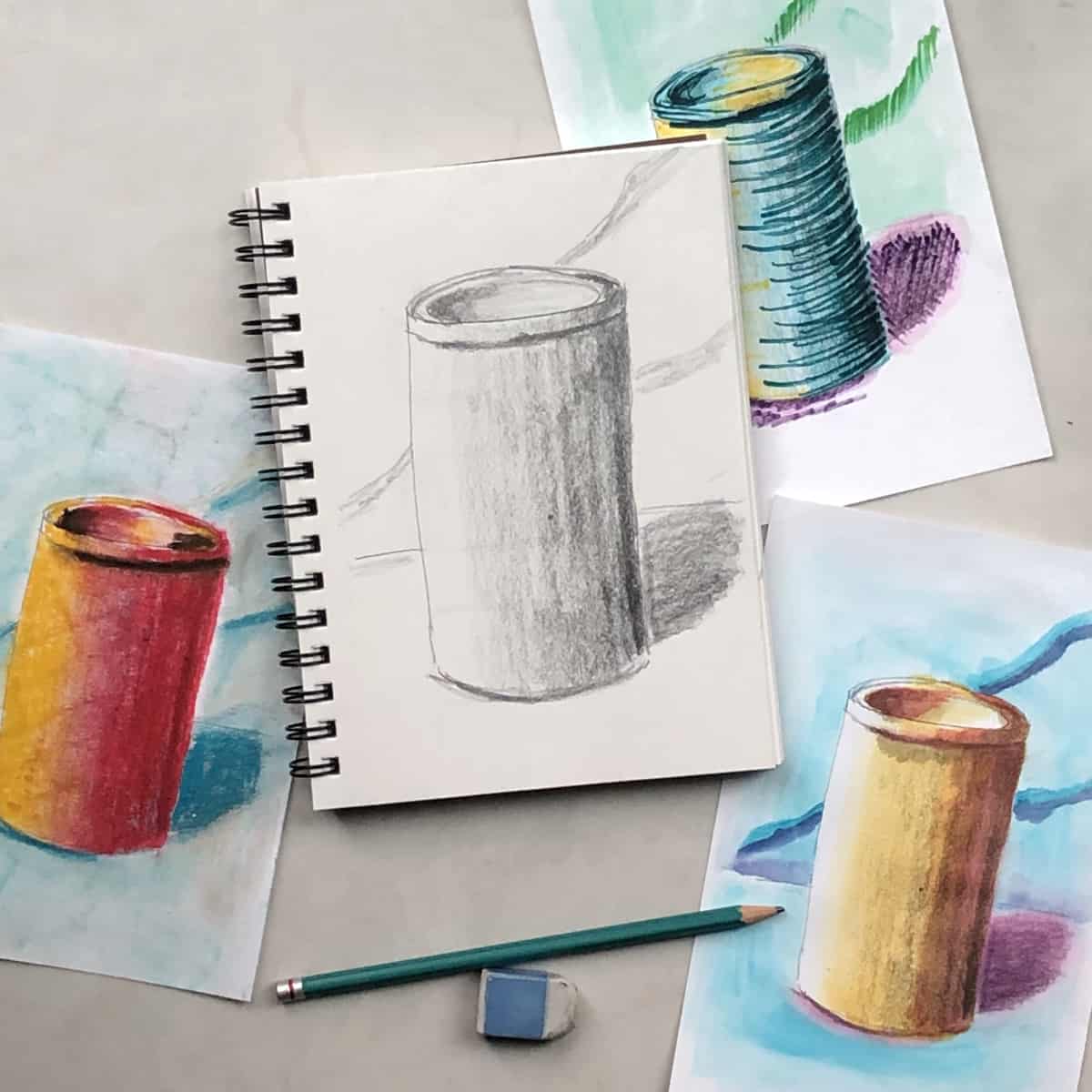
Jump to:
While it might seem "too simple” learning how to draw basic shapes such as cylinders is fundamental to learning how to draw and paint more complex subjects. Start with a cylinder and work your way up to still life, landscape and even figures.
Keep practicing these drawing skills and you will improve with time. Don’t give up though, even if it might seem intimidating.
Learning how to draw a 3d cylinder (tube) with shading can easily translate into many other drawing skills and techniques. Drawing a cylinder is a basic building block that can help you create other things such as trees, arms, legs torsos, furniture and much more.
Of course drawing a cylinder can really be more complex than this video explains. I will cover more about drawing this and other shapes with perspective in a later video.
You can easily start and stop the video to learn basic drawing at your own pace.
Materials
The materials needed for this lesson are very simple, you probably have them on hand already:
- Pencil
- Paper (Drawing paper is best but you can use whatever you have available. I am using a 5.5 x 8.5 inch spiral bound sketchbook with 60lb paper)
Art Lesson
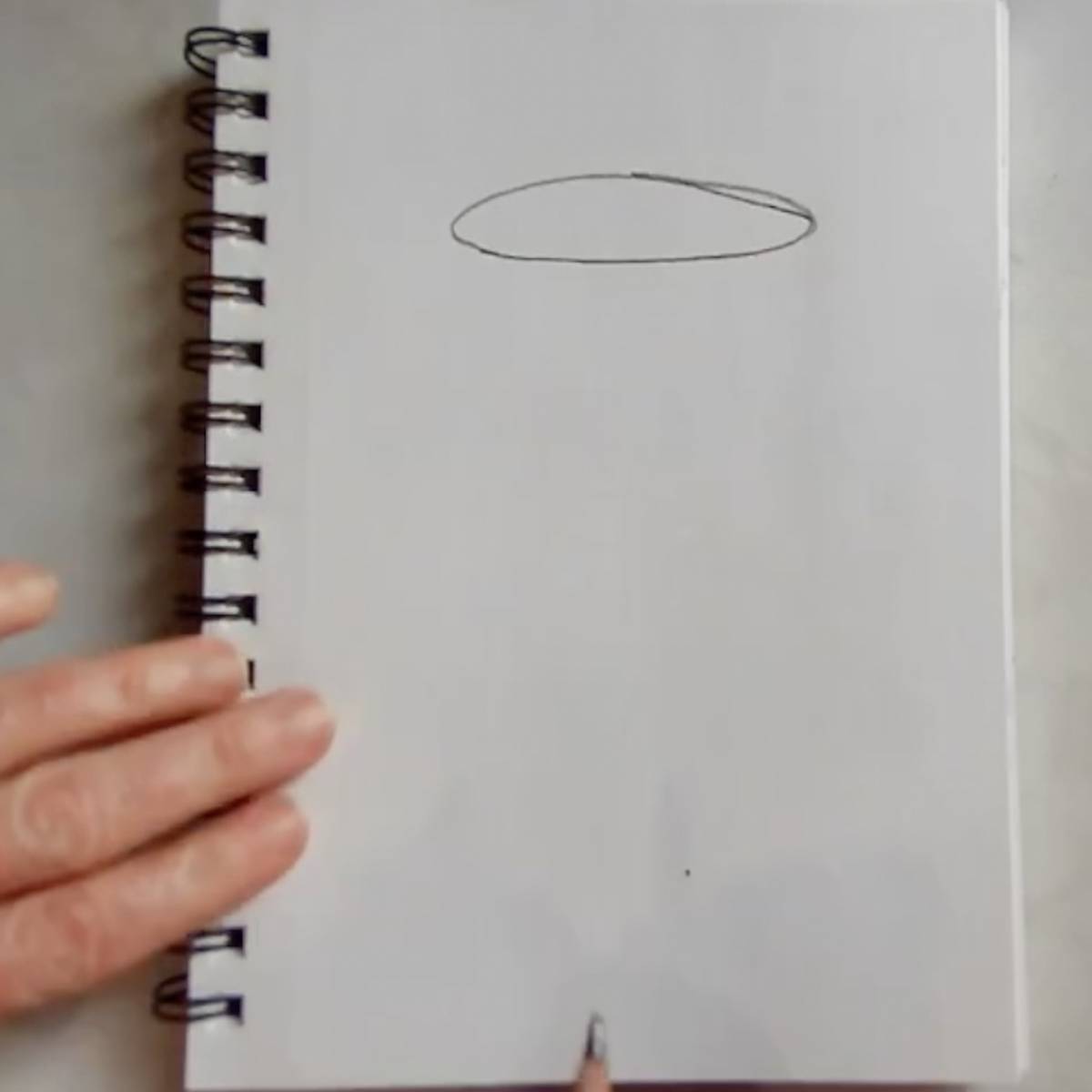
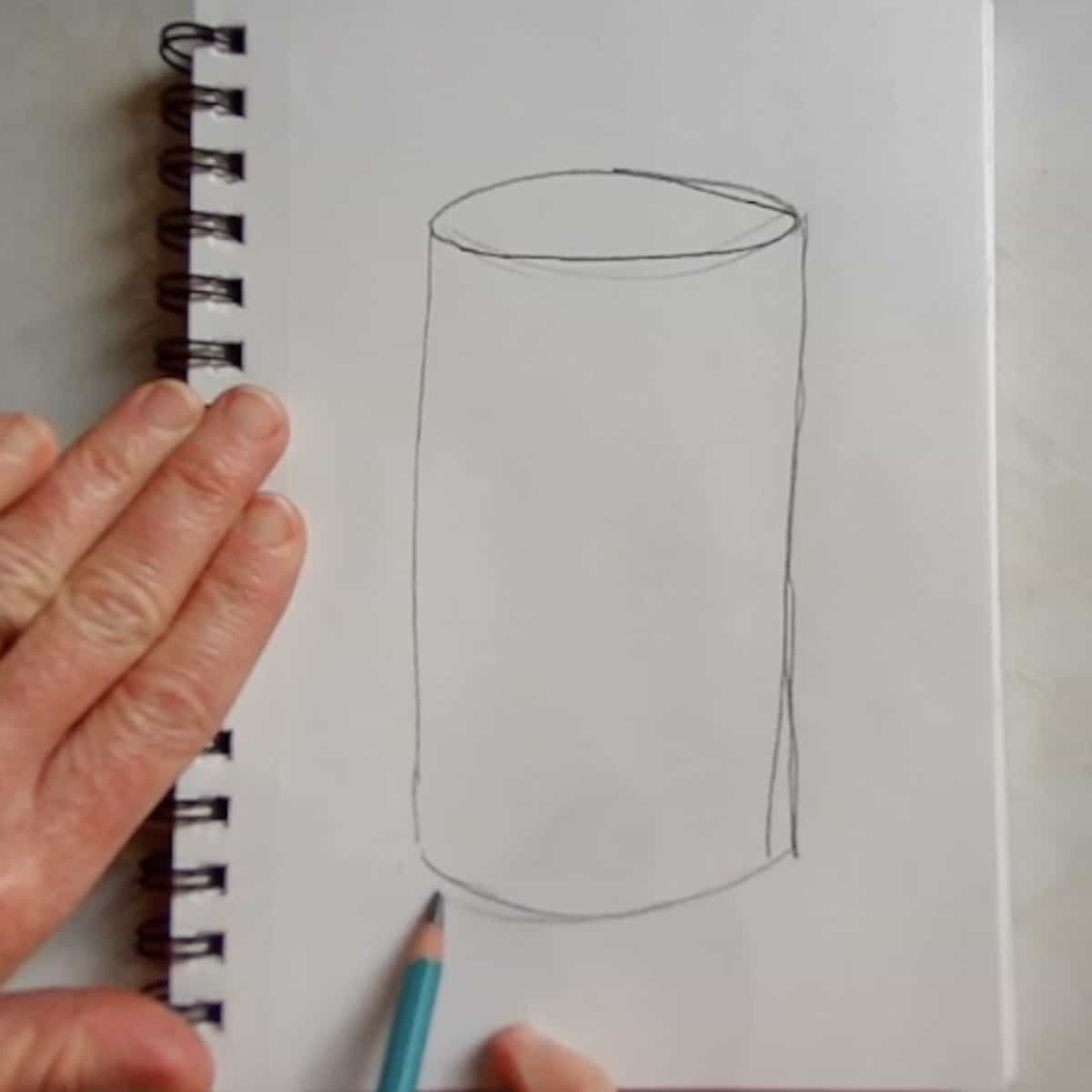
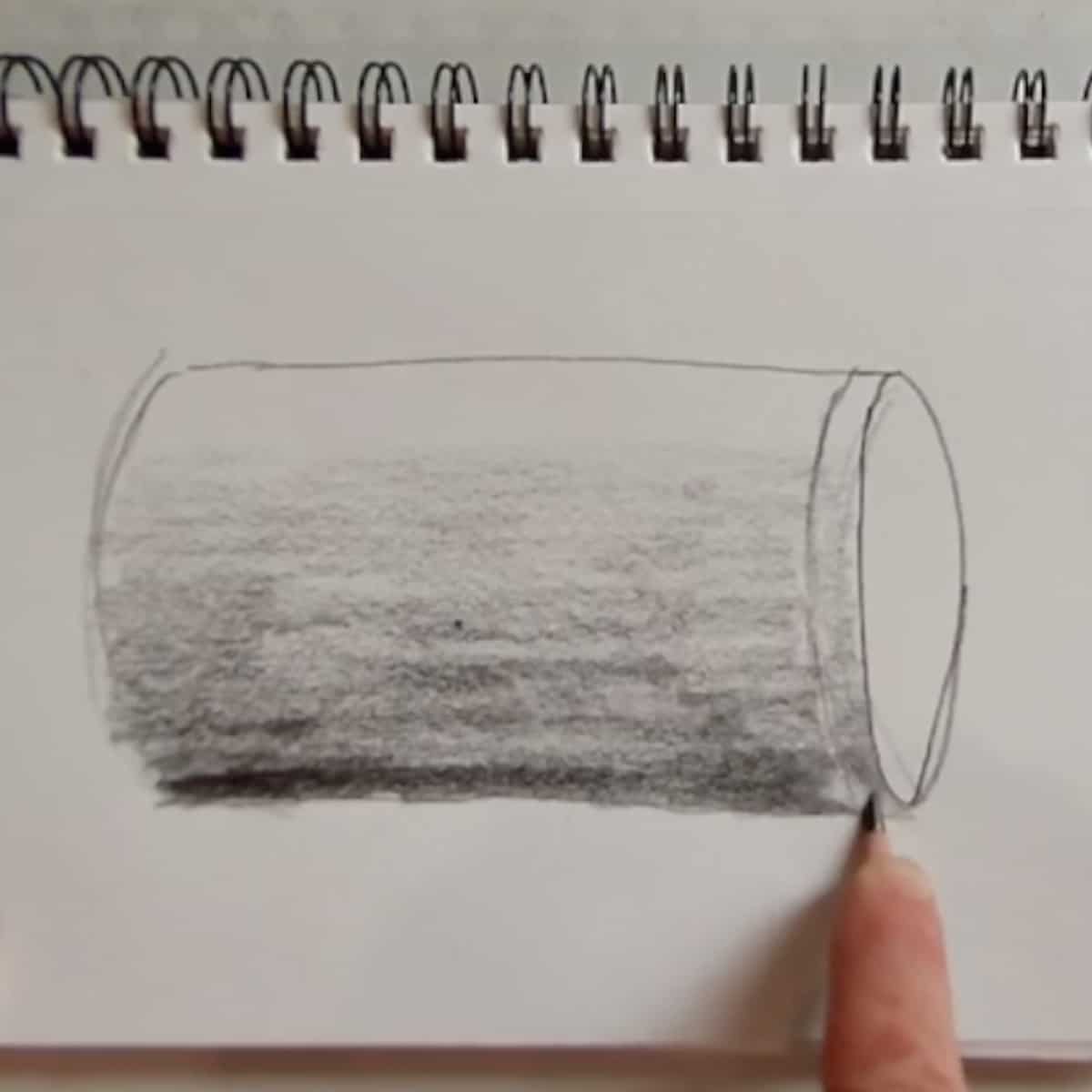
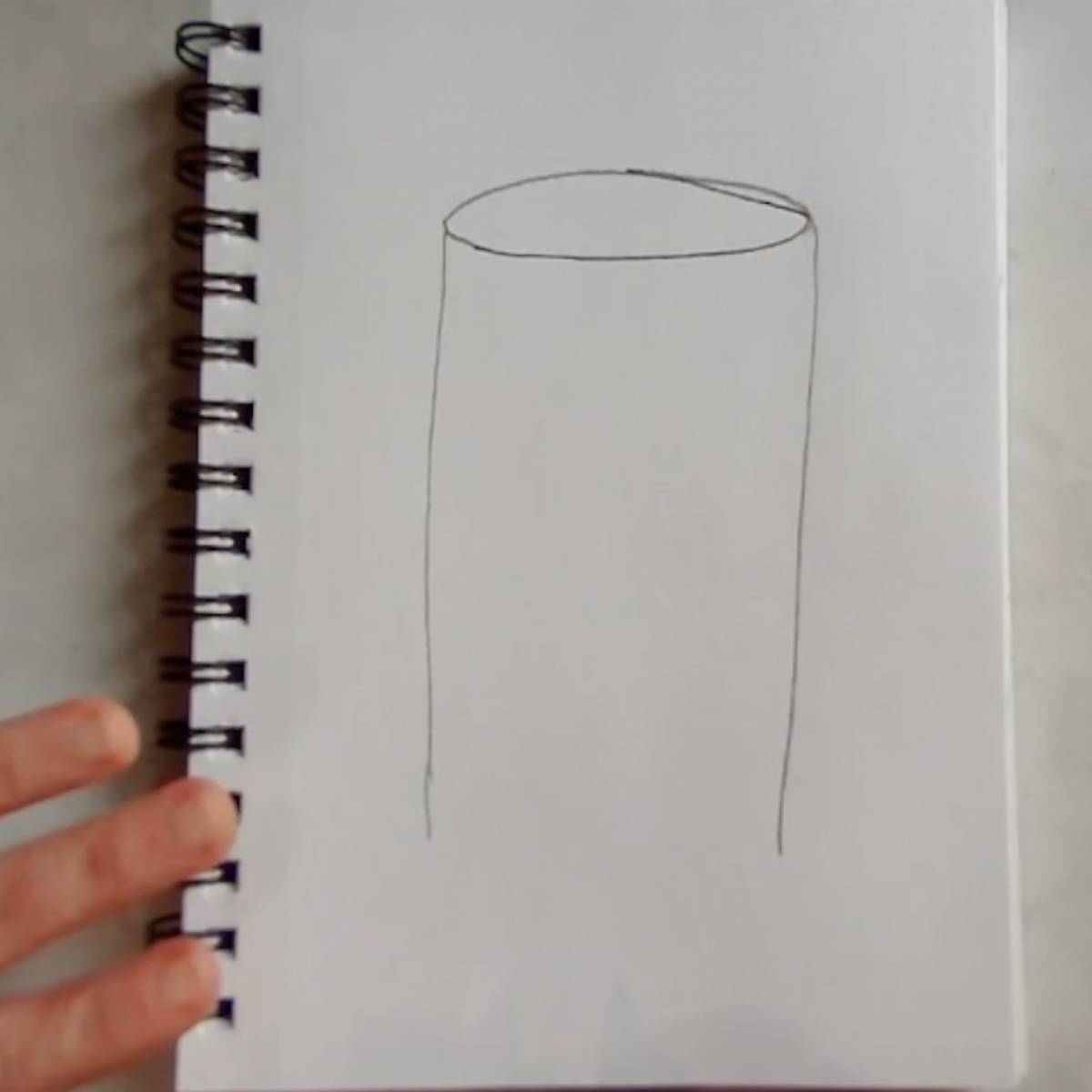
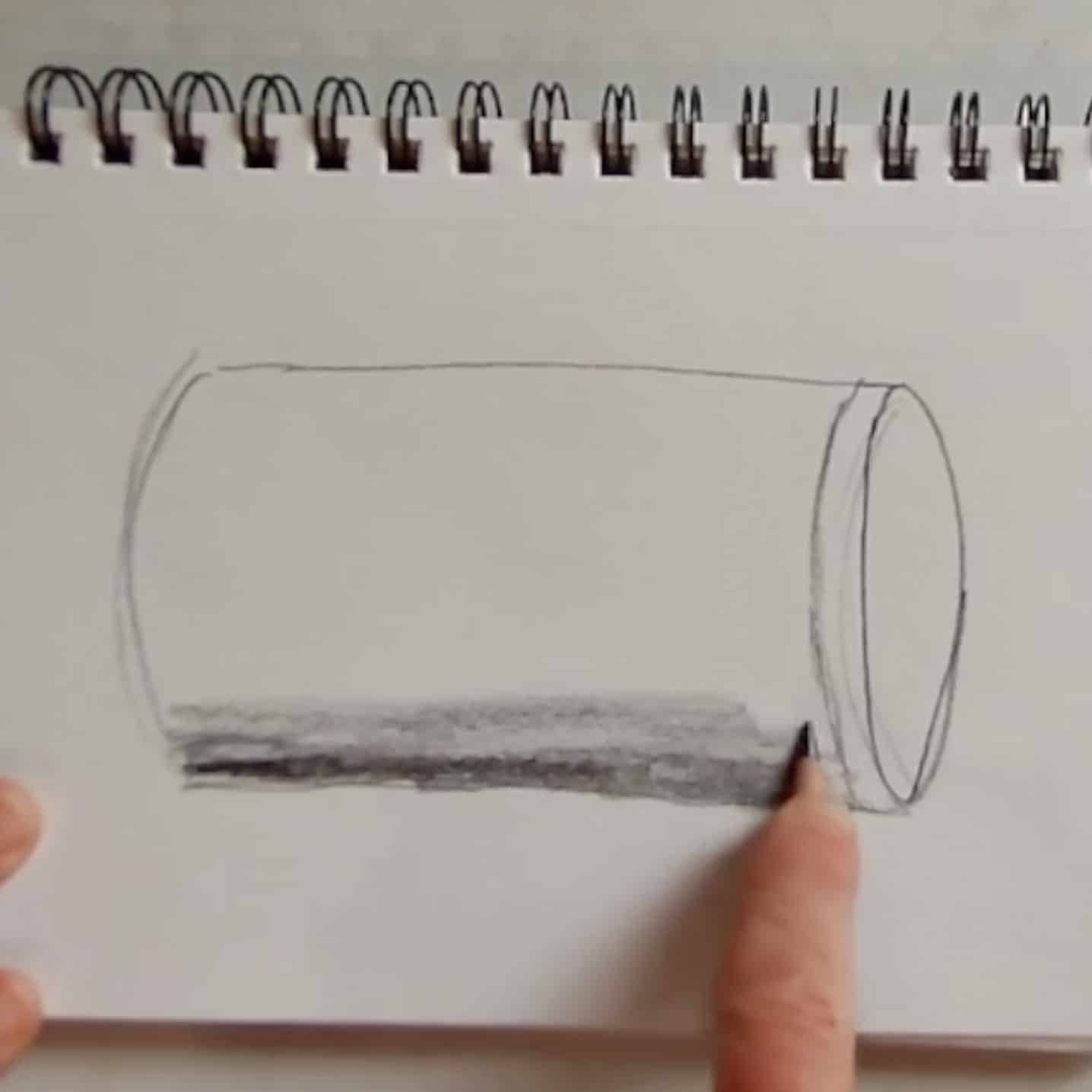
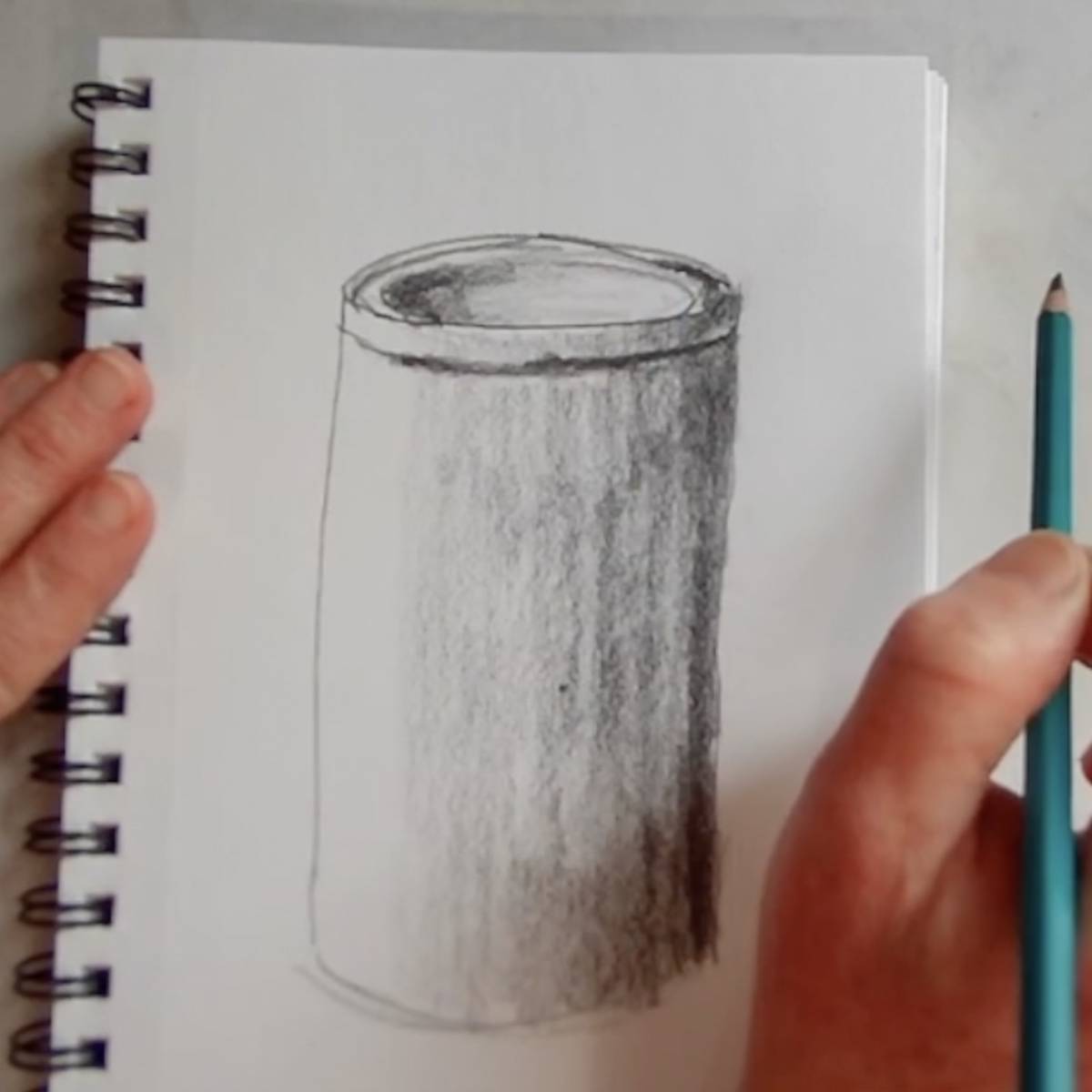
- Draw the top of the cylinder by drawing an oval.
- Draw two lines down from the edge of the oval. One on each side. Use your whole arm without wiggling your wrist to get straighter lines.
- Draw in a half oval at the bottom to connect the two lines.
- Shade in your cylinder by turning your pencil on the side and pushing on the top of it. This will help you shade a lot of area more quickly.
- One side will have more shadows and need darker shading. The other side can be left white. Take your time doing this to get a nice gradual transition between the light and dark shading.
- Draw in a shadow below the edge of the lid. Shade in the top of the lid where it is in shadow.
- Sketch and then then shade in the shadow that the cylinder is casting.
- Lastly, add in a horizon line and some of the folds of fabric that are in the background.
Variations
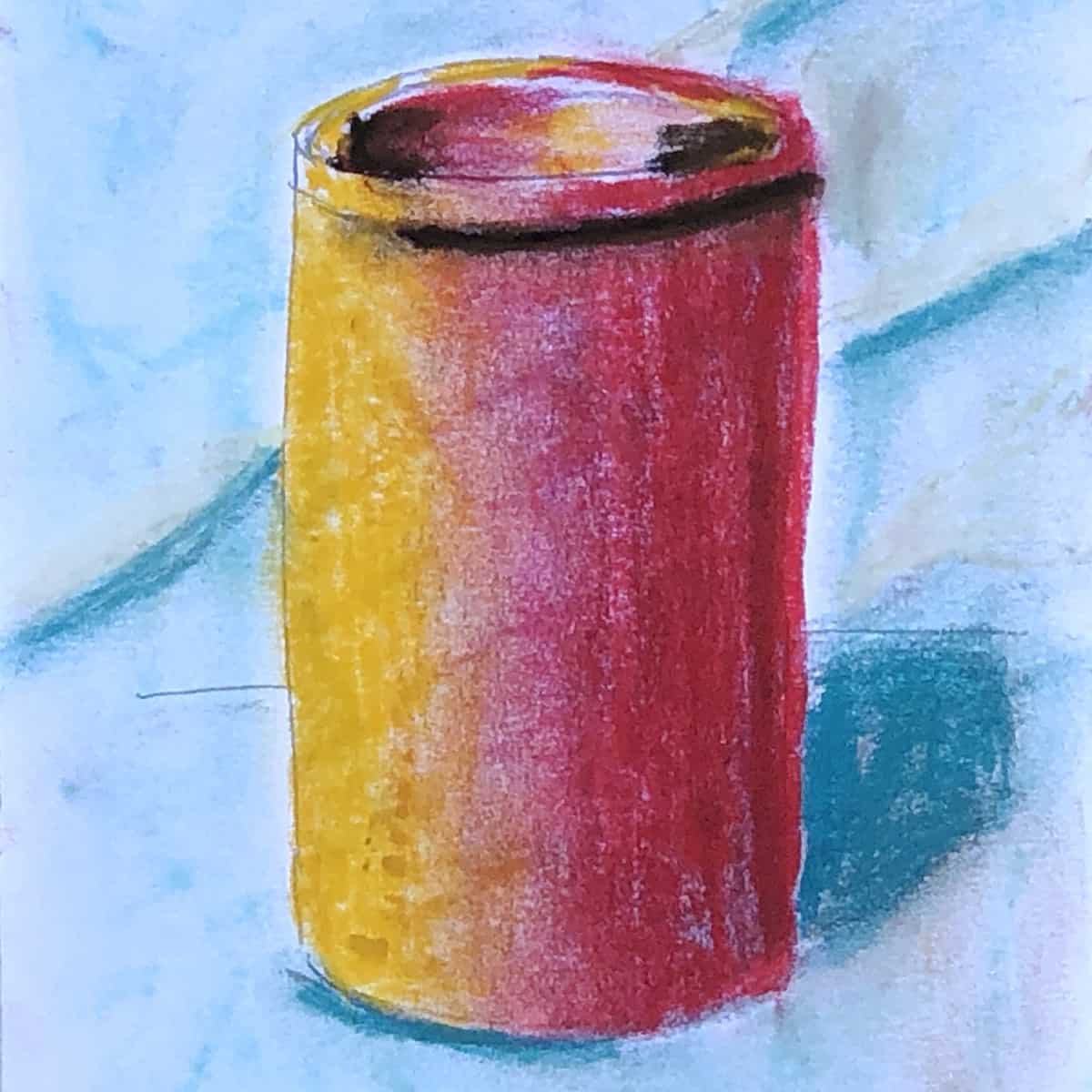
You can also try coloring in your cylinder with soft pastels, water color paint or colored pencils.
Tips and tricks
Push down harder on your pencil for darker shading and push more gently for lighter shading.
Turn your paper as needed to make it easier.
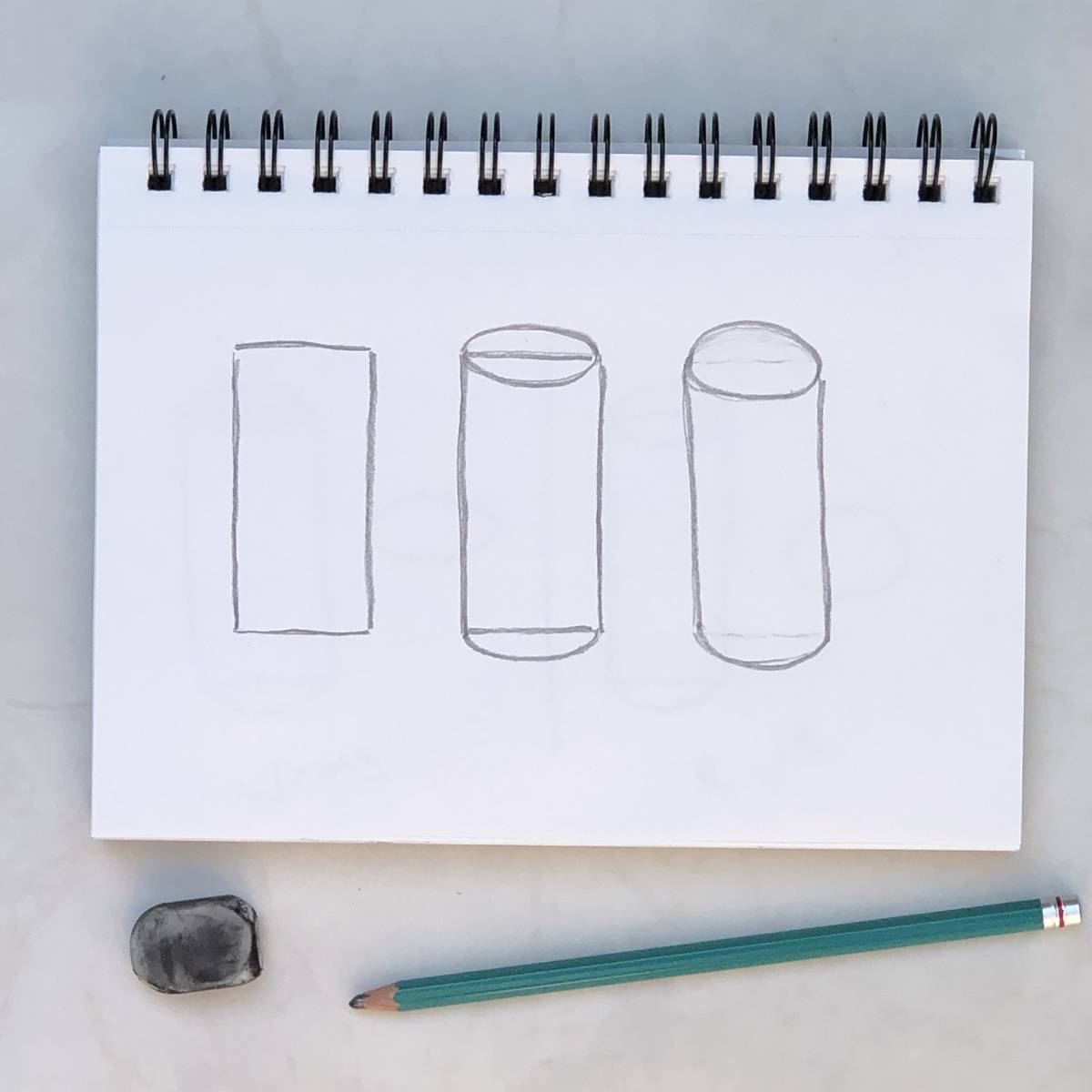
Many people like to start by drawing a rectangle then adding a half circle or half oval shape to the top. You can then go back and erase any lines that you don’t need.
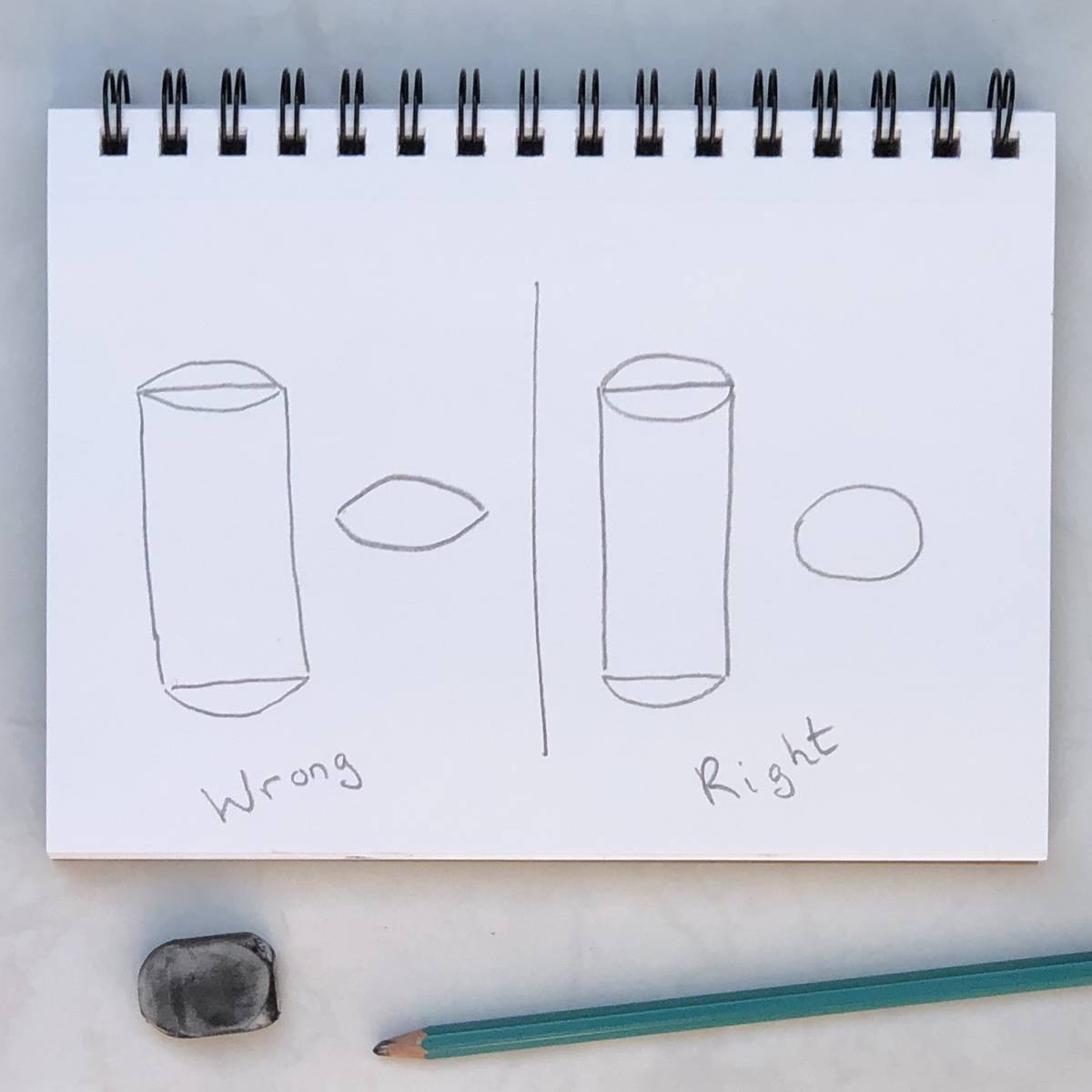
Don’t make the mistake of drawing an arc with pointy ends instead of a half circle or half oval. If you imagine looking down at this shape from above it looks something like an almond.
The correct shape when looking down on it from above will be a circle. So make sure that you point the ends of these lines inward or continue drawing the circle or oval.
Video of drawing a cylinder
Transcript
Read Transcript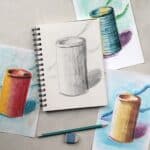
How to Draw a 3d Cylinder (Tube) with Shading
Equipment
- Pencil
- Paper (Drawing paper is best but you can use whatever you have available. I am using a 5.5 x 8.5 inch spiral bound sketchbook with 60lb paper)
Instructions
- Draw the top of the cylinder by drawing an oval.
- Draw two lines down from the edge of the oval. One on each side.Use your whole arm without wiggling your wrist to get straighter lines.
- Draw in a half oval at the bottom to connect the two lines.
- Shade in your cylinder by turning your pencil on the side and pushing on the top of it. This will help you shade a lot of area more quickly.
- One side will have more shadows and need darker shading. The other side can be left white. Take your time doing this to get a nice gradual transition between the light and dark shading.
- Draw in a shadow below the edge of the lid. Shade in the top of the lid where it is in shadow.
- Sketch and then then shade in the shadow that the cylinder is casting.
- Lastly, add in a horizon line and some of the folds of fabric that are in the background.
Notes
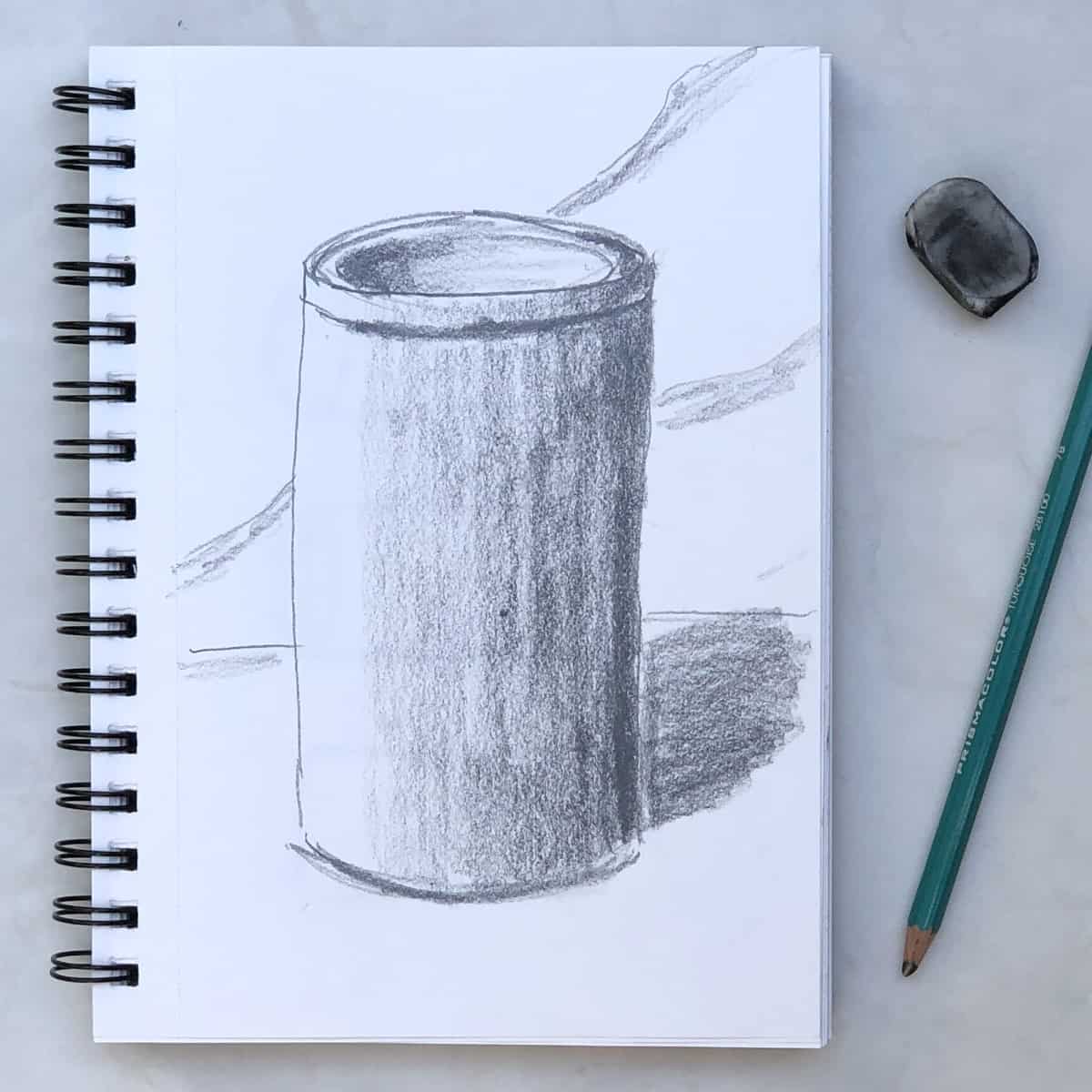
Lesson Downloads
For more practice
Try drawing your own objects for more practice. Challenge yourself by setting up still life of canisters, cups and soup cans.
Also think about making different types of surfaces appear in distinct ways. Glass, tin, fabric, metal, paper and cardboard all have different qualities and will look different. Try to capture these characteristics.
Try drawing what you actually see, not just what you think you see.
Frequently Asked Questions
Draw the top of the cylinder by drawing an oval. Draw two lines down from the edge of the oval. One on each side.Use your whole arm without wiggling your wrist to get straighter lines. Draw in a half oval at the bottom to connect the two lines.
Shade in your cylinder by turning your pencil on the side and pushing on the top of it. This will help you shade a lot of area more quickly. One side will have more shadows and need darker shading. The other side can be left white. Take your time doing this to get a nice gradual transition between the light and dark shading. Sketch and then then shade in the shadow that the cylinder is casting.
Learning how to draw basic shapes such as cylinders is fundamental to learning how to draw and paint more complex subjects. Start with a cylinder and work your way up to still life, landscape and even figures. Cylinders are also basic building block that can help you create other things such as trees, arms, legs torsos, furniture and much more.
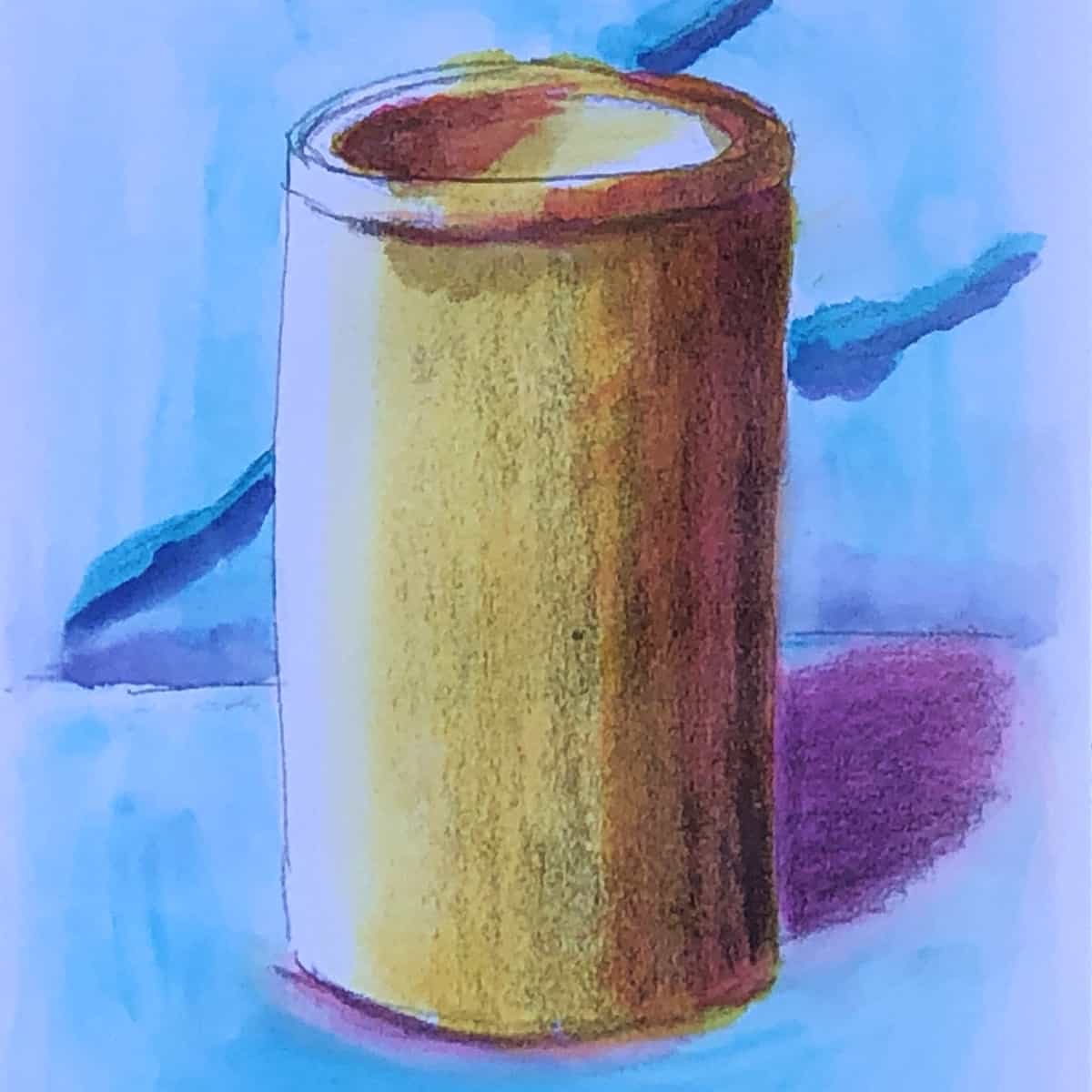


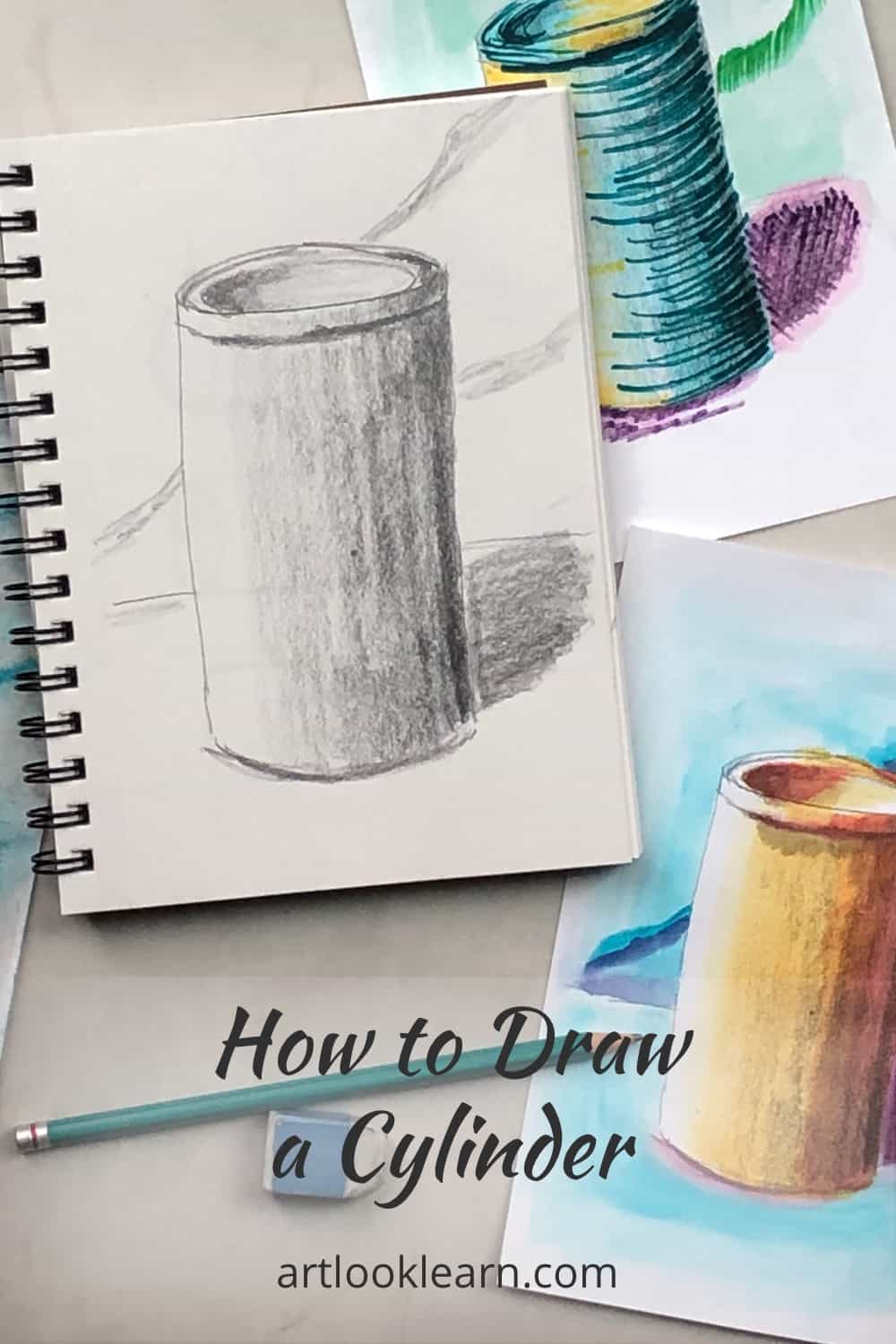
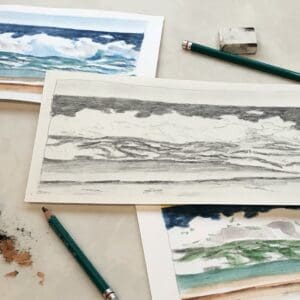
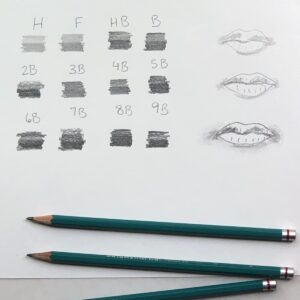

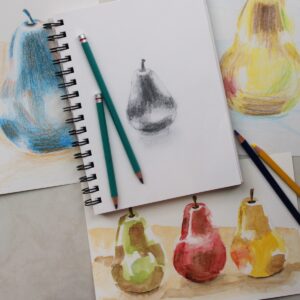
Raoul
Really good lesson for beginning drawing. I did this drawing right in my sketchbook.